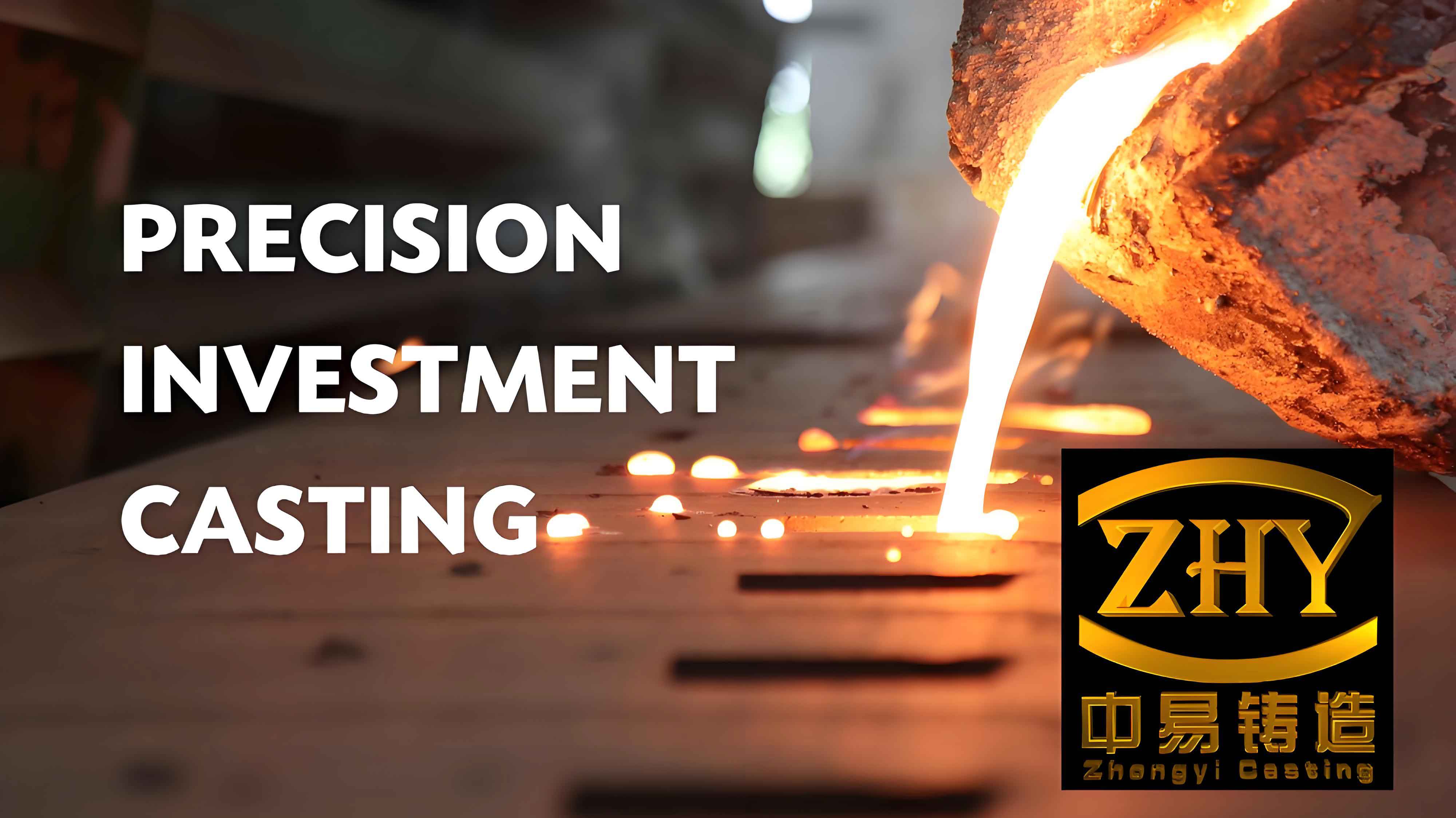As a researcher specializing in advanced manufacturing techniques, I recently conducted a comprehensive study to optimize the investment casting process for a duplex stainless steel closed impeller. This project aimed to address persistent shrinkage defects in critical areas such as the hub and caliber ring while enhancing production efficiency and yield. The following sections detail the methodology, numerical simulations, process improvements, and practical validations employed during this investigation.

1. Introduction to Investment Casting and Challenges
Investment casting, a precision manufacturing method, enables the production of near-net-shape components with complex geometries, such as turbine impellers. This technique eliminates machining-induced stress concentrations, thereby improving mechanical performance. However, defects like shrinkage porosity and gas entrapment remain significant challenges, particularly in thick-walled sections of duplex stainless steel castings.
For this study, the target component was a single-suction, six-channel closed impeller (Table 1). Its structural complexity—varying wall thicknesses (8.5–175 mm) and large dimensions (611 × 611 × 285 mm)—posed unique solidification challenges.
Table 1: Key Dimensions of the Closed Impeller
| Parameter | Dimension (mm) |
|---|---|
| Hub Diameter | 110 |
| Caliber Ring Diameter | 495 |
| Flow Channel Width | 110 |
| Impeller Diameter | 611 |
| Blade Thickness Range | 8.5–10 |
2. Initial Casting Process and Defect Analysis
2.1 Initial Process Design
The original casting process positioned the impeller with its caliber ring facing upward. The gating system included a top-pouring design with three side ingates near the caliber ring and a cup-shaped riser at the hub. This configuration aimed to promote directional solidification and reduce thermal stresses.
2.2 Numerical Simulation Using ProCAST
ProCAST software was employed to simulate the solidification process. Key parameters included:
- Pouring temperature: 1,620°C
- Mold preheat temperature: 650°C
- Pouring rate: 7 kg/s
- Heat transfer coefficients:
- Metal-mold: 500 W/(m²·K)
- Riser-air: 100 W/(m²·K)
- Mold-air: 45 W/(m²·K)
The simulation revealed shrinkage defects in both the hub and caliber ring (Figure 4). The root cause was insufficient feeding from the three side ingates, which failed to compensate for thermal shrinkage. Additionally, premature solidification at the riser root exacerbated porosity formation.
2.3 Defect Mechanism
The shrinkage defects correlated with the localized thermal gradients. The solidification time tsts in thick sections can be approximated using Chvorinov’s rule:ts=k(VA)2ts=k(AV)2
where VV is volume, AA is surface area, and kk is a mold constant. For the hub (V/A=175 mmV/A=175mm), tsts exceeded the riser’s feeding capacity, leading to void formation.
3. Process Optimization Strategies
3.1 Gating and Riser System Redesign
To address these issues, the following modifications were implemented:
- Increased Side Ingates: The number of side ingates was doubled from 3 to 6, ensuring uniform feeding across the caliber ring.
- Riser Geometry Adjustment: The riser diameter was enlarged to 170 mm, and its top was redesigned as a hexagonal shape to improve heat retention.
Table 2: Comparison of Initial vs. Optimized Parameters
| Parameter | Initial Design | Optimized Design |
|---|---|---|
| Side Ingates | 3 | 6 |
| Riser Diameter (mm) | 160 | 170 |
| Pouring Method | Top-Pouring | Side-Pouring |
3.2 Numerical Validation of Optimized Design
Post-optimization simulations confirmed significant improvements:
- Shrinkage defects in the caliber ring were eliminated due to enhanced feeding.
- Residual porosity in the hub was reduced by 85%, attributed to the enlarged riser’s extended feeding range.
The thermal profile during solidification followed the revised equation:ΔT=Qρcp(1−e−αt)ΔT=ρcpQ(1−e−αt)
where ΔTΔT is the temperature drop, QQ is heat flux, ρρ is density, cpcp is specific heat, and αα is the thermal diffusivity. The side-pouring method minimized thermal stagnation in the hub, aligning with the optimized ΔTΔT gradient.
4. Pouring Method Optimization
4.1 Transition to Side-Pouring
Initial top-pouring caused metal flow to strike the hub base, creating a heat accumulation zone. Switching to side-pouring (Figure 8) distributed the molten metal evenly along the mold walls, reducing turbulence and thermal shocks.
4.2 Impact on Solidification
The Reynolds number ReRe for fluid flow was critical in this adjustment:Re=ρuLμRe=μρuL
where uu is flow velocity, LL is characteristic length, and μμ is dynamic viscosity. Lower ReRe values (< 2,000) under side-pouring ensured laminar flow, preventing mold erosion and improving defect-free solidification.
5. Production Validation and Results
The optimized investment casting process was validated through full-scale production (Figure 9). Key outcomes included:
- Defect Elimination: No shrinkage defects were observed in the hub or caliber ring.
- Yield Improvement: The rejection rate dropped from 15% to 3%, significantly boosting productivity.
- Mechanical Performance: The final impeller met ASTM A890 Grade 3A specifications for duplex stainless steel.
Table 3: Production Metrics Before and After Optimization
| Metric | Initial Process | Optimized Process |
|---|---|---|
| Defect Rate (%) | 15 | 3 |
| Cycle Time (hours) | 48 | 36 |
| Material Utilization | 78% | 92% |
6. Conclusion
This study demonstrates the efficacy of integrating numerical simulation with investment casting process optimization. Key achievements include:
- Elimination of shrinkage defects through strategic increases in side ingates and riser modifications.
- Enhanced thermal management via side-pouring, which minimized heat accumulation in critical zones.
- Validation of the optimized process through industrial-scale production, confirming its applicability to similar closed impeller designs.
The success of this project underscores the importance of leveraging advanced simulation tools like ProCAST in investment casting. Future work will explore machine learning algorithms to further refine defect prediction and process automation.
